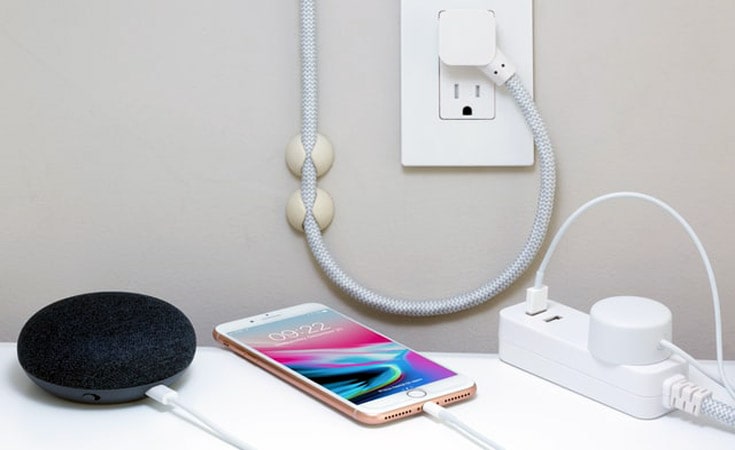Before we move on to how to perform an iPhone charging port repair? We must know which type of port are we dealing with, usually, there are two types of ports which are USB 2.0, and USB 3.0. Previously, all old iPhone models came with a USB 2.0 port which became old-fashioned as the technology upgraded. So, the company decided to replace that 2.0 with 3.0 for better charging. The 3.0 port has been used till now in all iPhone models.
1. Checking for Remaining Battery Percentage
While you are performing an iPhone charging port repair, the first thing you must consider is the check for low battery percentage, the battery has to charge less than 25% is recommended for charging port repair. If the battery is fully or partially charged, then it might explode or burn if exposed to heat or high temperature while you are removing or replacing the iPhone charging port.
2. Removal of Pentalobe Screws
If firstly you have confirmed that your iPhone battery is less than 25% and you are ready to perform a charging port replacement or repairing then, then start removing two screws that are attached on the lower side of the body. These screws must be removed by using proper tools like a screwdriver which is recommended for iPhones.
3. How to Open iPhone
While you have removed the body screws and you are ready to separate the screen from the body, then these things must be considered for getting any damage to your iPhone.
- By heating, the lower edge will strengthen the glue material and make it easy to remove the screen. If the screen is cracked you need to be more careful or before this get phone cracked screen repair services.
- Then the screen must be removed with the help of a suction cup, the suction cup must be placed on the top of the screen.
- While the suction cup has been placed, a flat-end spudger must be inserted from below which will increase the gap between the body and the panel.
- Continuously moving the spudger from below to the top removes glue particles and makes screen removal easy. Now use the suction cup to remove the panel from the body.
4. Remove Inside Screws Attached to Battery Covers
When the panel is detached from the body, the next step is to remove all necessary screws which are required for iPhone repairing or changing of charging port. These include screws of battery covers, antenna covers, and screws that are present on the charging port cover.
5. Removing Battery and Cases Covering Charging Port
After removing all necessary screws, the next step is to remove the strip of the battery and take it out from the body to prevent any damage. Now the battery has been removed, you must carefully remove the cover and wires that are connected with or on the charging port, the most important thing is to prevent getting fingerprint strip damage.
6. Removing the Charging Port
While removing all wires and making an easy approach to get your charging port repaired, then detach the old charging port. The iPhone charging port might be hard to pull out, as it fits completely in the body frame, so instead of making a quick rush, you must pull out the complete charging strip or board from the frame to get it repaired.
7. Repairing or Changing of Port
While you have removed the old port carefully, then you must look at whether this port needs repairing or complete replacement. When you have confirmed that the old port is not feasible to be repaired then you must place a new port with 3.0 support to get the job done. While you have placed the new charging port on the board before putting it back in the phone you must perform a check test with an electronic meter which confirms the perfect working of the port.
8. Placing All Things Back in Sequence
After you have completely repaired your old charging port with a new one, now you must carefully place all the connectors and screws back which you have removed from the iPhone. When you have completely closed all the device parts in sequence, now you must carefully place the panel back with the help of a suction cup and put the body screws in place to close the iPhone. Then you can confirm the proper working of your new or repaired iPhone charging port.
Discover more from Technical Master - Gadgets Reviews, Guides and Gaming News
Subscribe to get the latest posts sent to your email.








